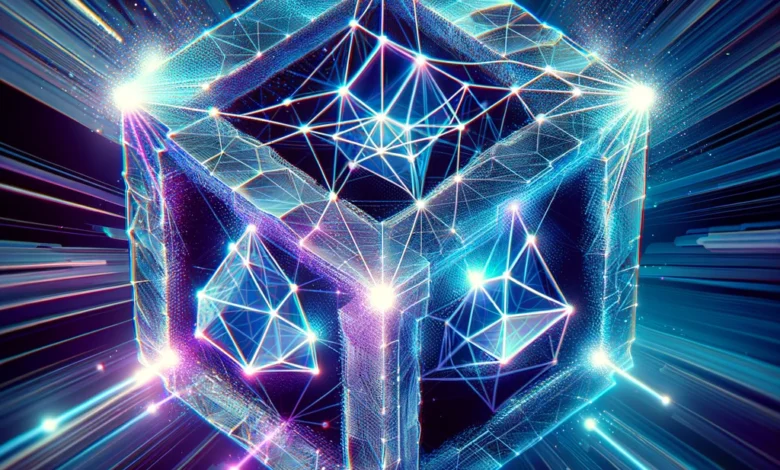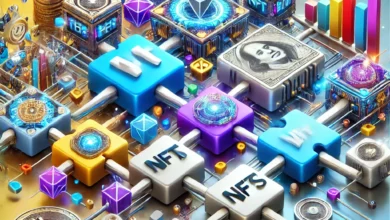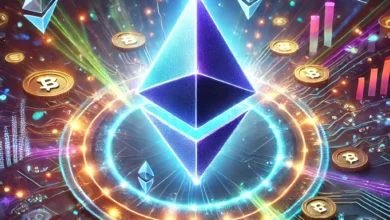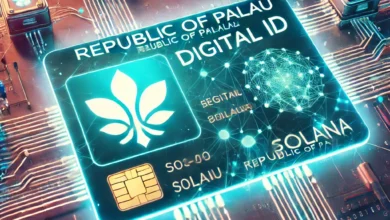Polygon 2.0: Revolutionizing Blockchain Scalability and Efficiency

The cryptocurrency and blockchain world is constantly evolving, with projects continuously striving to improve their networks. Polygon, formerly known as Matic Network, is no exception. Polygon’s upcoming upgrade to Polygon 2.0 represents a significant step forward in its mission to enhance scalability, security, and efficiency. This article delves into the intricacies of the Polygon 2.0 upgrade, exploring its features, benefits, and potential impact on the blockchain ecosystem.
Background: The Evolution of Polygon
Polygon started as Matic Network, a Layer 2 scaling solution for Ethereum, addressing issues related to high gas fees and slow transaction times. It gained prominence by providing a framework for building and connecting Ethereum-compatible blockchain networks. By transforming into Polygon, the project expanded its vision to create a multi-chain system akin to the “Internet of Blockchains,” facilitating interoperability between various blockchains.
The Need for Polygon 2.0
As the adoption of blockchain technology grows, so does the need for scalable and efficient solutions. Ethereum, despite being the most popular blockchain for decentralized applications (dApps), faces scalability issues, including high gas fees and slow transaction processing. Polygon 2.0 aims to address these challenges by introducing significant upgrades to the network.
Key Features of Polygon 2.0
- Enhanced Scalability: Polygon 2.0 introduces several innovations to improve scalability. It leverages zk-rollups (zero-knowledge rollups) and optimistic rollups to bundle multiple transactions into a single transaction, reducing the load on the main Ethereum chain. This results in faster transaction times and lower fees.
- Improved Security: Security is paramount in the blockchain space. Polygon 2.0 integrates advanced cryptographic techniques to enhance the security of its network. The upgrade includes robust mechanisms to prevent double-spending and other malicious activities, ensuring the integrity of the blockchain.
- Interoperability: One of Polygon’s core missions is to enable interoperability between different blockchains. Polygon 2.0 takes this a step further by introducing new protocols and standards that allow seamless communication between Ethereum and other blockchains. This interoperability fosters a more connected and versatile blockchain ecosystem.
- User Experience Enhancements: Polygon 2.0 focuses on improving the user experience by streamlining the process of building and deploying dApps. The upgrade includes developer-friendly tools and documentation, making it easier for developers to create and scale their applications on the Polygon network.
The Technical Breakdown
zk-Rollups and Optimistic Rollups
Rollups are a key component of Polygon 2.0’s scalability strategy. zk-Rollups bundle transactions off-chain and generate a cryptographic proof that is verified on-chain. This method significantly reduces the amount of data processed on the main chain, resulting in faster and cheaper transactions.
Optimistic Rollups, on the other hand, assume transactions are valid and only verify them if a challenge is raised. This approach also reduces the burden on the main chain, enhancing scalability. By incorporating both zk-Rollups and Optimistic Rollups, Polygon 2.0 offers a versatile solution to handle various transaction types efficiently.
Advanced Cryptographic Techniques
Polygon 2.0 employs advanced cryptographic techniques to bolster security. One such technique is zk-SNARKs (Zero-Knowledge Succinct Non-Interactive Arguments of Knowledge), which allows one party to prove to another that they know a value without revealing the value itself. This ensures that transactions are secure and private, enhancing the overall security of the network.
Interoperability Protocols
To achieve true interoperability, Polygon 2.0 introduces protocols like the Inter-Blockchain Communication (IBC) protocol and cross-chain bridges. These protocols facilitate seamless communication between different blockchains, allowing assets and data to move freely across networks. This interoperability is crucial for the growth and integration of blockchain technology into various industries.
Benefits of Polygon 2.0
Reduced Transaction Fees
One of the most significant advantages of Polygon 2.0 is the reduction in transaction fees. By optimizing transaction processing and leveraging rollup technology, users can enjoy lower fees, making it more cost-effective to use the Polygon network for various applications, including DeFi (Decentralized Finance) and NFTs (Non-Fungible Tokens).
Faster Transactions
Polygon 2.0 significantly improves transaction speed, providing near-instantaneous transaction confirmation. This is particularly beneficial for applications that require real-time interactions, such as gaming and decentralized exchanges (DEXs).
Enhanced Security
The integration of advanced cryptographic techniques ensures that Polygon 2.0 is highly secure. Users can transact with confidence, knowing that their assets and data are protected from malicious attacks.
Greater Interoperability
By enabling seamless communication between different blockchains, Polygon 2.0 fosters a more connected and versatile blockchain ecosystem. This interoperability opens up new possibilities for cross-chain applications and services, driving innovation in the blockchain space.
Potential Impact on the Blockchain Ecosystem
Polygon 2.0’s upgrades have the potential to significantly impact the broader blockchain ecosystem. Here are some of the potential effects:
Increased Adoption of DeFi
The reduction in transaction fees and improved scalability make Polygon 2.0 an attractive platform for DeFi applications. As a result, more DeFi projects may choose to build on Polygon, increasing its adoption and usage.
Growth of NFT Market
The NFT market has exploded in recent years, with artists and creators using blockchain to tokenize their work. Polygon 2.0’s enhancements make it an ideal platform for NFT projects, offering faster and cheaper transactions. This could lead to further growth in the NFT market on Polygon.
Enhanced User Experience
The user-friendly tools and improved developer documentation provided by Polygon 2.0 make it easier for developers to build and deploy dApps. This enhanced user experience could attract more developers to the Polygon ecosystem, driving innovation and expanding the range of available applications.
Broader Industry Integration
With its focus on interoperability, Polygon 2.0 can facilitate the integration of blockchain technology into various industries, including finance, supply chain, and healthcare. By enabling seamless communication between different blockchains, Polygon 2.0 can help bridge the gap between traditional industries and the blockchain world.





